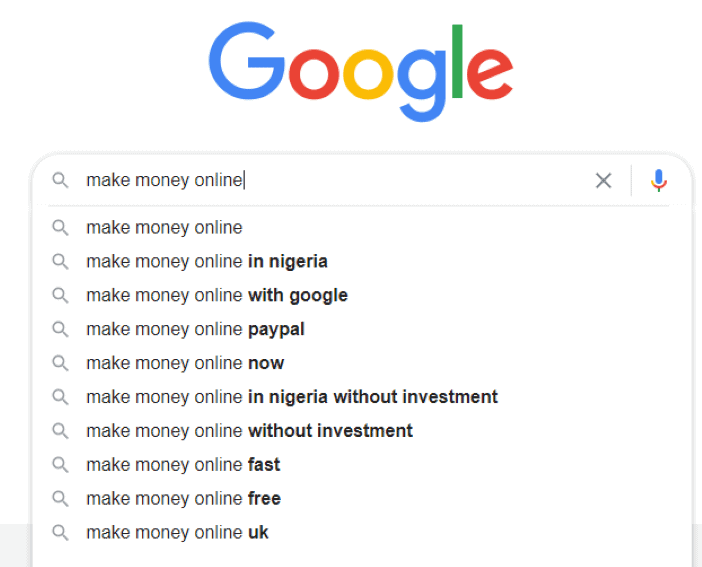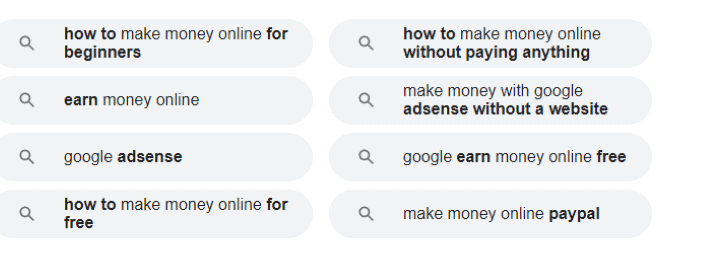Struggling to increase traffic to your blog?
This post will show you tested and proven methods that you can use to increase blog traffic. The simple strategies in this post will drive more targeted traffic to your blog within 30 days.
Have you ever checked your website’s analytics and wondered when you will start getting tons of traffic to your content?
You’ve invested your time and effort into churning out unique and engaging content, but no matter how hard you try, the traffic your blog receives is not encouraging.
You’re not alone in this situation and it doesn’t have to be like that; you can get lots of targeted and high-quality traffic to your website. I will show you how to do so in this post.
By adopting the tactics that will be revealed in this post, you will see a huge increase in the number of readers visiting your blog.
So, without further ado, let’s start!
Why Do You Need Traffic For Your Blog?
Before we consider how you can increase your blog’s traffic, there’s an issue that I’ll love to sort out. And that’s why you need traffic for your blog.
The larger the number of people that visit your blog the better.
However, what you need is not more traffic but the right traffic; not all traffic is good traffic.
You need to focus on increasing the quality of traffic that your blog receives. Bad traffic can break your business if care is not taken.
When you increase the number of quality traffic that your blog receives, you will have a higher chance of increasing your blog’s conversion. You will also be able to convert the traffic to paying customers.
To get quality traffic, you need to know what you want people to do when they land on your blog. You need to have a reason why you want more traffic.
Once you’ve figured out what you want people to do when they visit your blog, you can then optimize your blog to improve the chance of boosting conversions.
Tactics For Increasing Traffic To Your Blog
1. Use keywords
You need to incorporate keywords and SEO into your strategy if you want to drive tons of traffic to your website. People usually get uninterested when you ask them to implement SEO in their traffic generation strategy, however, search engine optimization yields excellent results when you do it the right way.
Apart from giving excellent results, it performs wonders.
By making use of the right strategy and adopting an effective SEO strategy, you will be able to get targeted traffic from Google. People will also be able to find the information that they need.
This in turn increases your reach and helps more people to know about your expertise.
So, don’t be scared of keywords and SEO.
However, as good as SEO is, you need to implement it moderately. Don’t stuff your content with keywords. While trying to make your content Google-friendly, you should also focus on making it user-friendly.
An SEO practice that you shouldn’t ignore is linking to other related posts that you’ve written on a particular topic. Don’t make the mistake of including many links in your content.
The user experience should be ahead of keywords and SEO.
There are billions of searches on Google every day. You can use keywords to get a portion of this huge traffic.
How to overcome the competition
There are lots of websites and advertisers on the internet today. All these advertisers are trying to rank for the most popular keywords. So, how can you overcome this competition and rank for your chosen keyword?
This is where long-tail keywords come in.
Why should you care about long-tail keywords?
As a blogger, you shouldn’t overlook the importance of long-tail keywords.
By the way, long-tail keywords are search phrases that comprise at least keywords. It is easier and cheaper to target them because these phrases have less competition. The only option you have to rank on top of Google search results is to target long-tail keywords.
Although long-tail keywords are good, you need to pay attention to the specific keywords that you intend to target.
For instance, let’s assume you have a health food store and you want to rank at the top of Google search for ‘health food,’ your chance of ranking for that keyword is slim because it is a very competitive search term.
However, if you go for ‘health food on a budget or ‘health food diet plans,’ you have a very high chance of ranking for those keywords.
How to find long-tail keywords
Now that you know how important long-tail keywords are, how do you go about finding them?
The first place to start is Google.
Start typing in a phrase in Google and see the auto-complete suggestions that Google brings. Take note of these suggestions.

The next step is to type in some of these terms into Google and write down the related suggestions that Google gives you. You can find these suggestions at the bottom of the page.

Copy and paste all the long-tail phrases you’ve written down into the Google Keyword Planner.
Pay attention to the phrases that get the highest amount of traffic. Write out the keyword phrases that have high search volume with low competition. Those are the goldmines that you should use in your content. Create content around those long-tail keywords.
SEO WordPress plugins that you should have on your blog
There are quite many WordPress plugins that can help you achieve your SEO goals. These plugins make it very easy for you to set your URL slugs, write the perfect meta descriptions, set sitemaps, and implementing other SEO tactics that you may not think of naturally.
The two plugins that I recommend are:
- All in One SEO Pack, and
- WordPress SEO by Yoast
We use the second plugin on this blog and it’s been awesome.
Whenever you publish a new post, share it across your social media networks such as Facebook, Twitter, LinkedIn, and Pinterest amongst others. If you spend time developing your network and providing them with valuable content, you will start getting quality traffic from social media platforms.
3. Write attention-grabbing headlines
The headlines you use for your blog posts are more important than the content. No one will bother to read your content if they are not convinced and captivated by your headline.
Headlines help people to decide whether they should click on your article and read more. For instance, check the titles of articles in magazines. They are enticing and offer promises and solutions. You need to use the same approach in your headlines to increase your readership and traffic.
4. Use pictures
Pictures are magical when it comes to increasing blog traffic. That’s because the human brain loves visuals.
We have a short attention plan, even shorter than that of a goldfish (goldfish has an attention span of 9 seconds while ours is 8 seconds). This is why popular social media networks like Facebook, Pinterest, and Instagram embrace visuals on their platforms.
People don’t have all the time in the world to read all the blog posts they come across. By making use of visuals, such as infographics, memes, comics, and videos, you will be able to retain readers’ attention and increase readership.
There are lots of tools that can help you achieve this within minutes. They include Canva, Visme, and Vine. For instance, you can use templates on Canva to create catchy infographics within minutes.
5. Increase the loading speed of your blog
In case you don’t know, Google doesn’t joke with loading time; it considers it as an important factor for ranking websites. According to results obtained from research, about 47 percent of readers want a web page to load within 2 seconds.
Let’s consider how you can improve your blog’s loading time.
The first thing is to reduce the number of plugins you install. Plugins slow down your blog, so you should only keep those that are necessary. Replace the extra add-ons with an all-in-one plugin (like Jetpack) to make your blog’s loading time more efficient.
Another thing you need to do to improve your blog’s loading time is to compress your images. You can use shortpixel.com for this purpose. You can also use BJ Lazy Load to make an image load whenever a reader scrolls to the bottom of your blog page.
6. Include relevant links
When you include relevant links in your blog posts, it will be easier for people to find your best posts. Also, your content will be easily indexed by search engines. This will help you to increase blog traffic.
Warning: Don’t add internal links in your content for the sake of doing so; add them only when they are relevant to what you’re writing and when you feel they will be helpful to your readers.
7. Incorporate email marketing into your content marketing strategy
This is the most dependable tactic that you can use to increase blog traffic.
The traffic you get from social media networks may fluctuate, but your email list is yours forever.
So, here are some tips that you can adopt if you want to use emails to drive traffic to your blog:
- Focus on growing your email list. You can grow your email list by making it easy for your readers to join your list. You can also give them a convincing and compelling reason to sign up to your list (for instance, you can offer them a gift, such as an ebook or video about something they’re interested in).
- An email must have one goal. Don’t confuse your subscribers by asking them to do different things in the same email.
- Create an autoresponder that you will use to send your best content to your subscribers.
- Include a link (that will redirect your list to your blog) in your email signature.
Wrapping It Up
Now, you have different traffic generation tactics at your disposal. You can start using them to increase blog traffic. However, focus on the ones that are best suitable for your blog and will give your blog the right traffic.
In case you haven’t done so, ensure you install an analytics tool on your blog. Don’t trust the statistics provided by your web host. Installing a third-party analytics tool, like Google Analytics, will help you monitor the traffic that your blog receives.
Focus on one tactic and once it starts giving you results, move on to another one.
But don’t forget, more traffic may not get you what you want every time.
Ensure you focus on generating relevant and targeted traffic. All the tactics that we have discussed in this post will help you achieve this.
Get started now!
